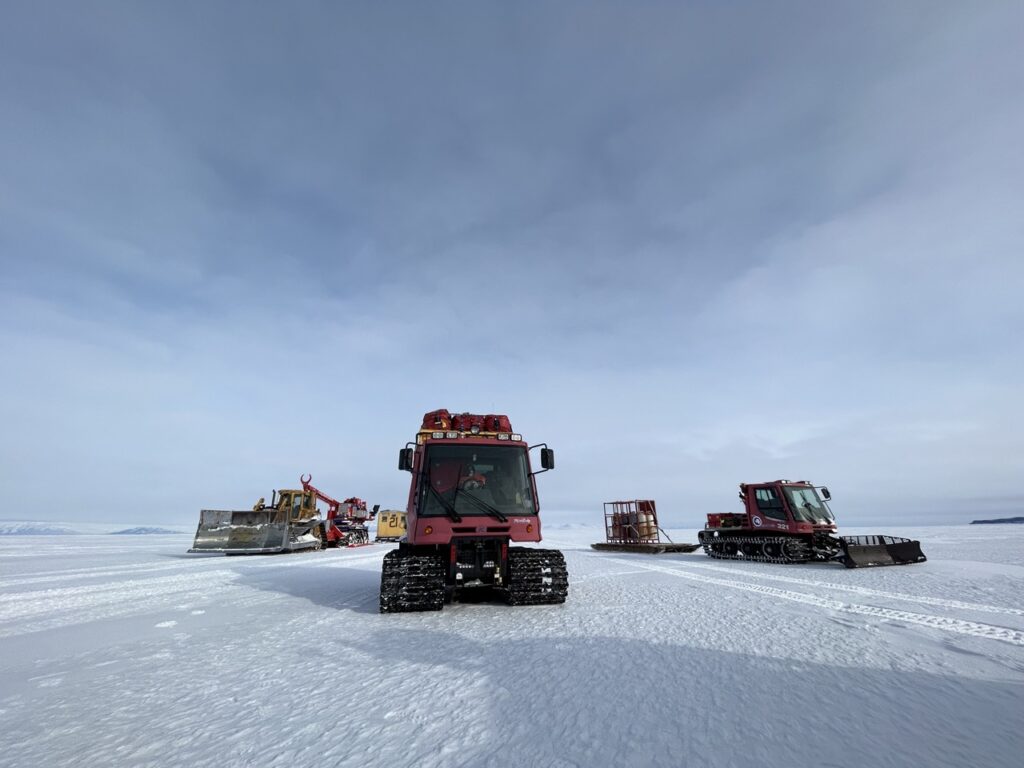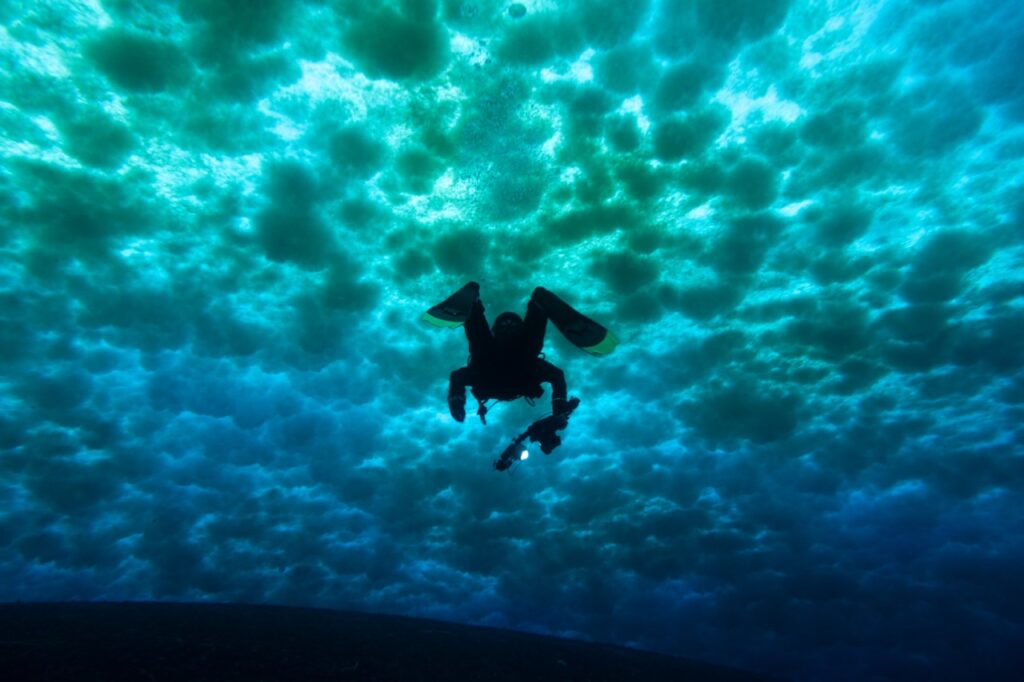I have been so glad to share my experiences with you in Antarctica and show imagery of the bizarre and incredible life under the ice. To show you this strange world, the first — and perhaps most crucial step — is finding a way under the Antarctic ice sheet. This requires a dive hole.
While a dive hole generally carries the same definition in Antarctica, the methods of making one vary widely. I have experienced two during my time here.
The first dive hole that I participated in making was an impressive feat of a large team of people with a range of specialties. This included heavy machine operators, carpenters, a sea ice profiler, divers, and scientists all working together to place a hole in the right spot and in the most efficient way possible. During this task, the biggest problem we had to overcome was moving large equipment over a crack in the sea ice, taking a number of ice thickness profiles to ensure the safety of everyone involved.

Once we found thick ice that could be driven over, the rest was relatively quick. The location of the hole was determined by GPS coordinates along with local expertise by Andrew and the Divers, and the machine operators drilled a hole in the sea ice that was 4 feet across and about 8 feet deep in less than 10 minutes.

The carpenters then towed a dive hut on top of the hole, and voila! We had a dive site and a great deal of gratitude.

The second dive hole I participated in making took place in New Harbor, a remote field camp on the edge of Antarctica’s Dry Valleys. Both ourselves and our equipment were dropped off by helicopters.

In this scenario, we were more resource-limited and therefore required more physical labor, time, and patience. This hole began with a jiffy drill — a large drill used to drill through ice to make fishing holes. Using the Jiffy drill, we drilled around 20 times through the first 3 feet of ice, making a large start. We then connected flights to the drill, or ~3-foot extensions to the drill bit, until we hit the water.

After hitting the water, we placed a continuously heated element down the jiffy drill hole for about 20 hours, and waited for the ice to melt into a divable hole!

For every dive hole, so much expertise and support is required from McMurdo station. I couldn’t be more thankful to all the people who made our work possible. Their work made our entry to the other world beneath the Antarctic ice possible.


